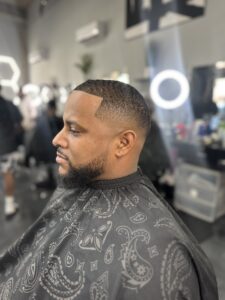In a fashion world saturated with repetition and seasonal conformity, Kapital Clothing stands defiantly on the fringes — wild, unpredictable, and unfiltered. Founded in the heart of Japan’s Okayama Prefecture, a region known for its denim heritage, Kapital is far from an ordinary clothing label. Instead, it’s a brand that resists classification, bringing together elements of vintage Americana, Japanese textile traditions, and global subcultures to craft garments that tell stories more than they follow trends. Wearing Kapital is never just about fashion — it’s about identity, curiosity, and a quiet rebellion against the expected.
The Origins: From American Influence to Japanese Artistry
Kapital began in the 1980s as a denim-focused endeavor, deeply inspired by American workwear. Toshikiyo Hirata, the brand’s founder, had studied and lived in the United States, where he developed a fascination with blue jeans and their rugged utility. Returning to Japan, he settled in Okayama — known globally as the birthplace of Japanese selvedge denim — and started crafting jeans with precision and soul. But Kapital’s identity wouldn’t be fully shaped until his son, Kiro Hirata, joined the brand years later. Kiro brought with him a visionary’s mind and a creative appetite that would catapult Kapital from a local denim house into an international fashion phenomenon.
A New Design Language Emerges
When Kiro took the creative reins, Kapital transformed. Gone were the days of strictly workwear-replica jeans. In their place emerged wildly imaginative silhouettes, patchwork chaos, mismatched fabrics, hand-dyed textiles, and motifs pulled from cultures around the world. Suddenly, Kapital Denim wasn’t just making clothes — it was telling deeply layered, visually complex stories through garments that defied logic but oozed character. The brand became a symbol of sartorial freedom, mixing Navajo blankets with Buddhist iconography, layering military vests over floral-printed shirts, and turning traditional Japanese silhouettes into runway-ready rebellion. And yet, every piece still carried the DNA of craftsmanship and the elegance of considered imperfection.
Clothing That Respects the Past While Questioning the Present
Kapital’s brilliance lies in how it treats history. Rather than simply replicate heritage pieces, it reimagines them. A classic Noragi jacket is reborn with frayed hems and boro-inspired stitching. A simple chambray shirt gets reworked with smiley face patches and bold contrasting cuffs. Even their most minimal garments carry intentional irregularities — uneven stitching, rough textures, or sun-faded dyes — designed to evoke a sense of time and life. The result is clothing that feels nostalgic and futuristic at once. It honors the past without being stuck in it, always pushing the boundaries of what fashion is supposed to be.
The Philosophy of Wabi-Sabi in Every Stitch
Central to Kapital’s aesthetic is the Japanese concept of wabi-sabi: the beauty of things imperfect, impermanent, and incomplete. Kapital doesn’t hide wear and tear — it celebrates it. The brand’s frequent use of boro (a traditional Japanese method of patching and reinforcing garments) reflects a mindset that values repair over replacement. In doing so, Kapital makes a quiet statement against disposable fashion. Their clothes are meant to last — not just in quality, but in relevance. A Kapital piece isn’t designed for one season, but for an entire life, meant to be worn, re-worn, and passed on like a family heirloom.
Global Cult Status Without Corporate Hype
Kapital has never relied on traditional marketing to grow its influence. There are no big budget ad campaigns, no flashy fashion week presentations, and very few official press releases. Yet, the brand enjoys a near-mythical status in fashion circles. It thrives on discovery. Fans — whether celebrity musicians, collectors, or fashion insiders — often stumble upon Kapital organically, fall in love with a piece, and then dive deep into its eccentric, ever-evolving world. Personalities like John Mayer, Shia LaBeouf, and A$AP Rocky have been seen wearing Kapital, but even their visibility hasn’t made the brand go mainstream. That exclusivity, that sense of being part of a private fashion subculture, only adds to Kapital’s allure.
Inside the World of Kapital Stores
To fully experience Kapital is to step inside one of its physical stores in Japan. These aren’t retail outlets — they’re more like art installations. Each Kapital shop has its own aesthetic and architectural concept, designed to immerse visitors in the brand’s eclectic world. You’ll find vintage Americana decor, antique sewing machines, handwoven textiles, and racks filled with rare one-off pieces that may never be seen online. Even the employees are often dressed head-to-toe in Kapital, not as uniform, but as self-expression. Walking into a Kapital store isn’t just about buying clothes — it’s about stepping into a visual and tactile narrative that surrounds every item on the shelf.
Signature Pieces That Tell the Kapital Story
Among Kapital’s many creative hits, certain items have become iconic. The Ring Coat, with its distinctive wrap closure and voluminous cut, blends military and traditional Japanese influences into a wearable sculpture. The Smiley Bone scarves — equal parts morbid and playful — encapsulate Kapital’s knack for humor and contradiction. Then there are the Century Denim jeans, crafted with natural dyes and reinforced to last for generations. Their boro jackets, sashiko-stitched and layered in fading indigo, are beloved by collectors. Each of these pieces doesn’t just serve a function — they provoke a reaction, spark conversation, and carry meaning that deepens with time.
Kapital and the Quiet Movement of Sustainable Fashion
In today’s fashion industry, sustainability is often used as a buzzword — a marketing tool rather than a true commitment. Kapital takes a different path. Without needing to broadcast it, the brand has embraced sustainability in its practices for decades. Kapital uses natural dyes like indigo and kakishibu, sources high-quality materials meant to last, and creates garments that promote care and repair rather than waste. Many of their collections are produced in small, deliberate batches, prioritizing quality over quantity. In Kapital’s world, sustainability is not a campaign — it’s simply the way things have always been done.
How to Style Kapital in Everyday Life
For newcomers, Kapital can seem intimidating — its bold designs, layered textures, and unique fits aren’t your typical ready-to-wear. But the key to wearing Kapital is to treat it like wearable art. You don’t need to overthink it. A Kapital jacket can elevate the simplest t-shirt and jeans. One statement scarf can transform an entire look. Many fans choose one standout piece and build a minimalist outfit around it. Others embrace the maximalism and go full Kapital — clashing patterns, asymmetry, and all. There are no rules. Kapital doesn’t follow trends, and it doesn’t expect you to either.
Final Thoughts: Why Kapital Isn’t Just Fashion — It’s a Feeling
Kapital Clothing isn’t for everyone — and that’s what makes it special. It doesn’t aim for mass appeal or seasonal hits. It speaks to those who value craft over convenience, who find beauty in the worn and the weird, and who see clothing not just as a utility but as a medium of self-expression. In a fast-moving world where most fashion fades quickly, Kapital stands still — rooted in its values, bold in its expression, and timeless in its vision. To wear Kapital is to tell the world you care about where your clothes come from, what they mean, and how they make you feel. And in a sea of sameness, that kind of authenticity is rare — and priceless.









